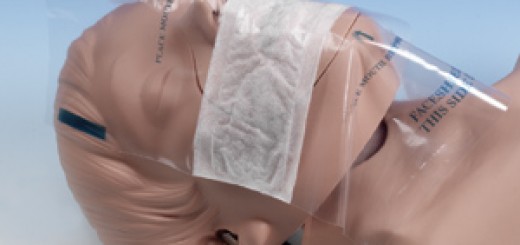Can CPR Cause a Pneumothorax (collapsed lung)?
A pneumothorax, also known as a collapsed lung, occurs when the lung separates from the inner chest wall. This causes the lung to collapse. A pneumothorax can be life-threatening as the lung is no longer working efficiently. The build-up of air in the chest cavity can compress the heart and main blood vessels, this situation is known as a tension pneumothorax.
A pneumothorax can be caused by trauma to the chest wall and by rib fractures. For this reason, some candidates on CPR training courses are concerned about the possibility of CPR resulting in a pneumothorax due to the deep chest compressions.

So, can CPR cause a pneumothorax to occur in the victim when you are resuscitating them?
The answer is yes, there is a small risk of a pneumothorax occurring during cardiopulmonary resuscitation (CPR).
Rib injuries are the most common complication of CPR, many patients who undergo effective CPR will sustain a rib or breastbone fracture. A pneumothorax is less common but can occur due to the forces involved in giving effective chest compressions.
This risk should not stop you from performing CPR!
The purpose of CPR is to save life. Any potential complications resulting from resuscitation can be dealt with afterwards. The most important consideration is early, effective CPR in the seconds to minutes following a cardiac arrest.
Delays in commencing resuscitation are associated with worse survival rates. In addition, weak or shallow chest compressions are much less effective. Therefore, each chest compression should be a minimum of 5cm deep in order to push oxygenated blood to the brain and vital organs.
In summary, don’t worry about the risk of causing injuries (including pneumothorax) to a patient in cardiac arrest. Carry on with hard and fast chest compressions until medical aid arrives.





